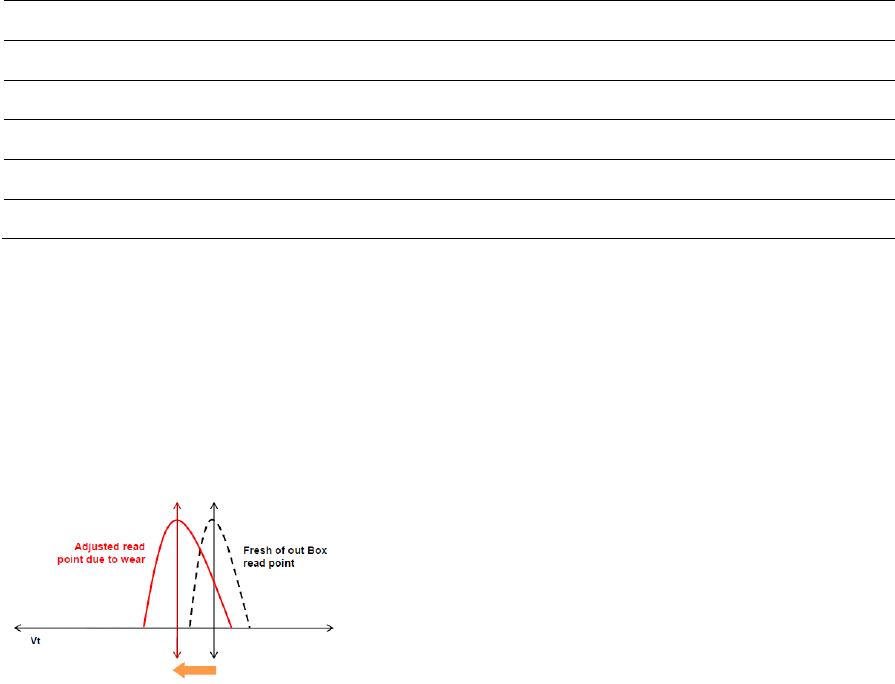Solid State Drive Technology Differences between SLC, MLC and TLC NAND

Technical white paper | Solid State Drive Technology
3
Table 1. Write endurance
SLC MLC TLC
Bits per cell 1 2 3
P/E Cycles 100,000 3,000 1,000
Read Time 25us 50us ~75us
Program Time 200-300us 600-900us ~900-1350us
Erase Time 1.5-2ms 3ms ~4.5ms
SLC NAND flash typically rates endurance at about 100K cycles. MLC NAND flash is typically rated about 3K-5K cycles. TLC
NAND flash is typically rated about 1K-3K cycles. Fewer available PE cycles make it important that TLC maintain low write
amplification, because high write amplification will more quickly use up PE cycles.
Wear leveling algorithms and write amplification are never perfect. Providing a specific number for endurance is very
difficult because every drive behaves differently and user workload varies. DPS (digital signal processing) solutions can help
with lower endurance NANDs. Every time you program or erase the cell, you degrade it, and the DSP reads the voltage
change and adapts to it. While a DSP won’t make the NAND last indefinitely, it does prevent stress to the NAND by allowing it
to last for more P/E cycles. If it can extend NAND life, it helps suppliers use smaller process nodes and possibly more bits
per cell.
As higher density devices come online, a new coding technique known as Adaptive Endurance Code (AEC) can help increase
the number of program/erase cycles that a flash device can endure. Data-dependant wear implies that flash device lifetime
can significantly be increased by converting data into bit patterns prior to programming, which cause minimal wear. AEC can
be adapted to data compressibility to maximize endurance gains with low system overhead cost.
Block copy time is the largest limiting factor for random write performance. As block copy times increases, random
performance decreases.
Key factors that impact NAND Flash random write performance are as follows:
• Number of pages per blocks
• Increase of tPROG
• Increase in I/O transfer time





